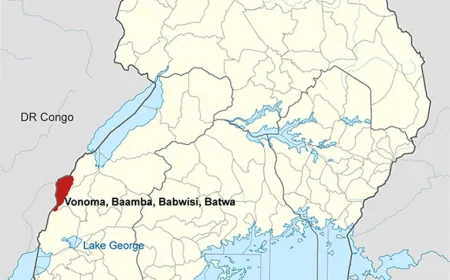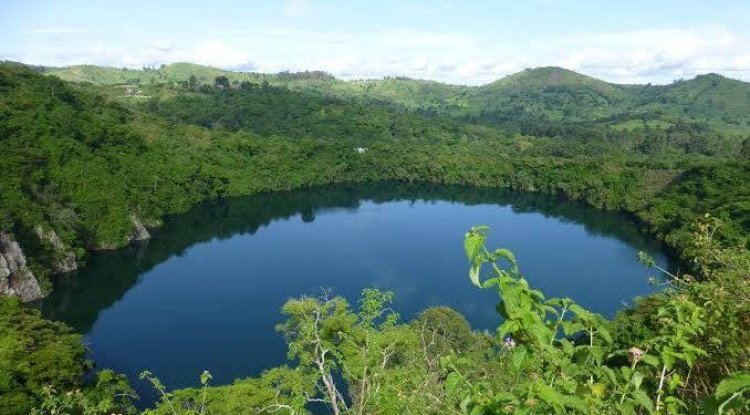The Kumam Tribe
The Kumam people trace their lineage back to the early fishing, agricultural, and herding communities of Ethiopia.

Once upon a time, nestled along the shores of Lake Kyoga in Uganda, there existed a tribe whose story remained largely untold. Their name? The Kumam (also known as Ikumama, Ikokolemu, and Akokolemu, referred to by the Iteso).
Origins and Migration
The Kumam people trace their lineage back to the early fishing, agricultural, and herding communities of Ethiopia. Around the 17th century, they embarked on a southward migration, seeking refuge from land pressure. Their journey led them to the serene shores of Lake Kyoga, where they settled in the districts of Serere, Soroti, and Kaberamaido.
Lost Language, New Identity
The Kumam traditions whisper of their connection to the Iteso people. However, over time, they lost their Eastern Nilotic Ateker language and adopted the Western Nilotic Luo spoken by their Lango and Acholi neighbors. Prolonged contact and intermarriages shaped their linguistic identity.
Language
The Lwoo (Luo) group of Nilotic languages includes the language spoken by the Kumam, which bears the same name. Language scholars divide it into two groups: the Dinka (people of Sudan) and the Southern Luo (people of Kenya), Long'o (people of Uganda), and Alur (people of Zaire and Uganda). While Kumam is farther away from Acholi, it is comparable to Paluo (Dhopaluo) and Lang'o. The writing is in the Latin alphabet.
The Kumam were originally Plains Nilote people who progressively adopted the Lwoo tongue of the newcomers, much like the Lang'o people (Lang'i). The Alur, who had previously spoken a Sudanic language, likewise accepted Lwoo clans as sovereign and adopted Lwoo speech. Language and literacy initiatives are being carried out through radio broadcasts.
Political and Social Structure
In the heart of Kumam society, clan leaders known as “wegi Atekerin” held sway. These leaders maintained law and order, arbitrated disputes, and ensured general administration. Alongside them were the “wegi ikodeta Cel,” leaders of dancing groups, and the heads of ancient homes, the “wegi Cel.”
The Kumam also have a Cabinet appointed by HRH won Ateker Papa Kumam to oversee and manage the activities of the Cultural Institution, Etok Me Kumam, on his behalf with a number of Ministers , Deputy Prime Ministers, and Prime Ministers.
These leaders played pivotal roles in shaping the Kumam way of life.
Economy
The Kumam were traditionally pastoralists, raising cattle, sheep, goats, and poultry. They continue to rely on agriculture now, with millet, sorghum, potatoes, beans, and peas served with sauces as their staple foods. The clan owned the land communally. The ladies manufactured clay pots, plates, baskets, and mats.
Music, dance, and storytelling
The rhythm of life in Kumam villages was punctuated by music, dance, and storytelling. Ceremonial, religious, and political functions all provided occasions for music to fill the air. As the sun dipped below the horizon, the elders gathered the younger generation, weaving tales of ancient heroes and forgotten legends.
Marriage Traditions
In days old, parents orchestrated marriages for their children. Young girls would be betrothed to boys at an early age, becoming unofficial wives until they came of age. Some girls even grew up in their betrothed’s homes, awaiting the official handover.
Death
They do not believe in natural death. All deaths were linked to witchcraft. When someone died, there was a lot of crying and willing. Burial would not begin until all of the deceased's family had gathered. Mourning could last for a week. It appears that they did not believe in endless life, but rather believed the spirits of the deceased did not die. They have the ability to cause harm to the living. For this reason, the family built a shrine for the ancestral spirits. They slept and relaxed here on their travels and visits to the family. In the event of sickness or before embarking on a hunt or a long journey, one would pass by his ancestors‘ shrine to ask for health and good fortune.
The Lesser-Known Kumam
While the Kumam may not grace the glossy pages of travel blogs, their existence is woven into the fabric of Uganda’s history. They are the guardians of Lake Kyoga, the keepers of stories whispered by the wind. Next time you gaze across the tranquil waters, remember the Kumam—a tribe whose tale deserves to be told.
What's Your Reaction?
 Like
2
Like
2
 Dislike
0
Dislike
0
 Love
0
Love
0
 Funny
0
Funny
0
 Angry
0
Angry
0
 Sad
0
Sad
0
 Wow
1
Wow
1













































































